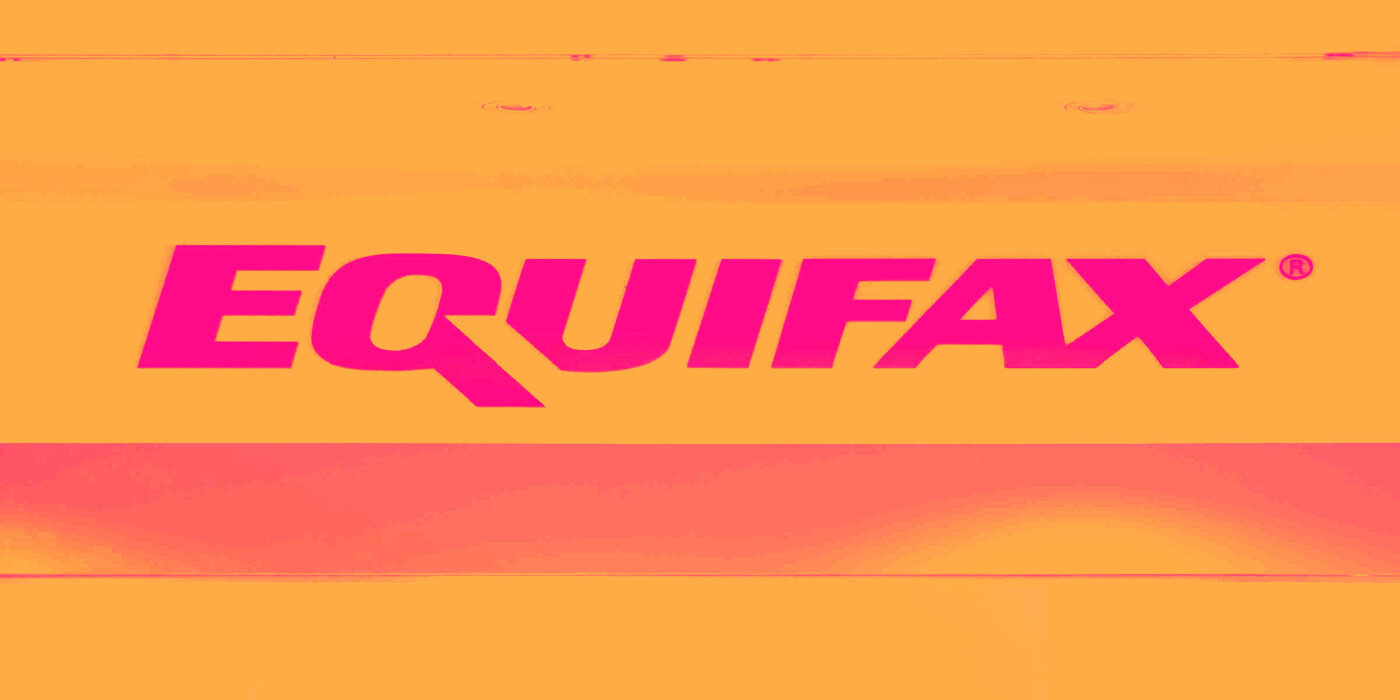
Credit reporting giant Equifax (NYSE:EFX) announced better-than-expected revenue in Q2 CY2025, with sales up 7.4% year on year to $1.54 billion. On the other hand, next quarter’s revenue guidance of $1.52 billion was less impressive, coming in 0.9% below analysts’ estimates. Its non-GAAP profit of $2 per share was 4.2% above analysts’ consensus estimates.
Is now the time to buy EFX? Find out in our full research report (it’s free).
Equifax (EFX) Q2 CY2025 Highlights:
- Revenue: $1.54 billion vs analyst estimates of $1.51 billion (7.4% year-on-year growth, 1.5% beat)
- Adjusted EPS: $2 vs analyst estimates of $1.92 (4.2% beat)
- Adjusted EBITDA: $499.3 million vs analyst estimates of $493.7 million (32.5% margin, 1.1% beat)
- The company slightly lifted its revenue guidance for the full year to $6.01 billion at the midpoint from $5.97 billion
- Management slightly raised its full-year Adjusted EPS guidance to $7.48 at the midpoint
- Operating Margin: 20.2%, in line with the same quarter last year
- Market Capitalization: $29.61 billion
StockStory’s Take
Equifax’s second quarter results drew a negative market reaction, with management pointing to a combination of higher-than-expected mortgage revenues and ongoing challenges in government and hiring-related business lines. CEO Mark Begor noted that “the majority of the revenue outperformance was in US mortgage, principally in USIS from stronger preapproval product growth and a slightly stronger market.” However, persistent weakness in hiring trends and state-level government funding created pockets of volatility across the company’s Workforce Solutions segment. CFO John Gamble cited elevated litigation expenses and one-time costs, which tempered margin expansion despite solid top-line growth.
Looking ahead, Equifax’s mildly increased full-year guidance is anchored by expectations of continued innovation in cloud-based products and expansion in both government and consumer lending verticals. Management highlighted the upcoming rollout of multi-data income verification solutions and new partnerships at the state level as growth drivers for the second half of the year. Yet, Begor cautioned that “continued near-term volatility as agencies at the state level manage funding changes” could dampen government revenue growth. Uncertainty around macroeconomic factors, such as tariffs and interest rates, remains a headwind to both hiring activity and mortgage market recovery.
Key Insights from Management’s Remarks
Management attributed Q2 performance to strong mortgage pricing, new product traction in verification and lending, and early benefits from cloud transformation, but flagged government and talent business headwinds as key areas of concern.
- Mortgage preapproval strength: USIS saw significant gains in mortgage preapproval and prequalification products, driven by new data integrations like Twin Indicator, which aggregates employment and income information to help lenders better assess applicants.
- Cloud-enabled new products: The company’s post-cloud migration allowed for faster deployment of new solutions, such as the integrated income verification service expected to launch in the third quarter, and enabled improved operational efficiency in USIS and International divisions.
- Government vertical volatility: Workforce Solutions’ government segment faced near-term revenue headwinds due to changes in federal and state funding structures, with management citing dynamic state budgets and delayed contract renewals as sources of unpredictability.
- International region divergence: Latin America and Brazil outperformed expectations as more consumers entered the formal credit system, while Canada lagged due to economic softness and tariff-related uncertainty. Europe and Asia Pacific delivered stable growth amid ongoing cloud migration efforts.
- Margin mix challenges: Despite business unit margin improvements, company-wide margin expansion was limited by increased litigation costs and a revenue mix shift toward lower-margin mortgage products, offsetting gains from cost control and technological efficiencies.
Drivers of Future Performance
Equifax’s guidance reflects optimism in product innovation and market expansion, but is tempered by persistent macroeconomic and segment-specific uncertainties.
- Macroeconomic and funding headwinds: Management continues to monitor the impact of tariffs, interest rate volatility, and evolving state government budgets, all of which could affect mortgage volumes, hiring activity, and demand for verification services in the near term.
- Product innovation and adoption: The rollout of multi-data solutions—including expanded income verification tools and integration with state and federal social programs—is expected to drive share gains and differentiate Equifax’s offerings, though adoption timelines, especially in government, may extend into 2026.
- Litigation and operational expenses: Elevated litigation costs are anticipated to persist through the year, creating a drag on corporate margins despite strong cost management at the business unit level. Management is also investing in flexible contract structures to support clients facing budget constraints.
Catalysts in Upcoming Quarters
As we look to the next few quarters, StockStory analysts will be closely tracking (1) the pace of adoption for Equifax’s new income and employment verification products in mortgage and government programs, (2) stabilization of government and talent business revenues as state funding and hiring trends evolve, and (3) evidence of sustained margin improvement despite ongoing litigation and macroeconomic headwinds. Results in international markets and the timing of federal program rollouts will also be critical to the company’s outlook.
Equifax currently trades at $241, down from $259.85 just before the earnings. At this price, is it a buy or sell? Find out in our full research report (it’s free).
Stocks That Trumped Tariffs
Donald Trump’s April 2024 "Liberation Day" tariffs sent markets into a tailspin, but stocks have since rebounded strongly, proving that knee-jerk reactions often create the best buying opportunities.
The smart money is already positioning for the next leg up. Don’t miss out on the recovery - check out our Top 6 Stocks for this week. This is a curated list of our High Quality stocks that have generated a market-beating return of 183% over the last five years (as of March 31st 2025).
Stocks that made our list in 2020 include now familiar names such as Nvidia (+1,545% between March 2020 and March 2025) as well as under-the-radar businesses like the once-micro-cap company Kadant (+351% five-year return). Find your next big winner with StockStory today.
StockStory is growing and hiring equity analyst and marketing roles. Are you a 0 to 1 builder passionate about the markets and AI? See the open roles here.
